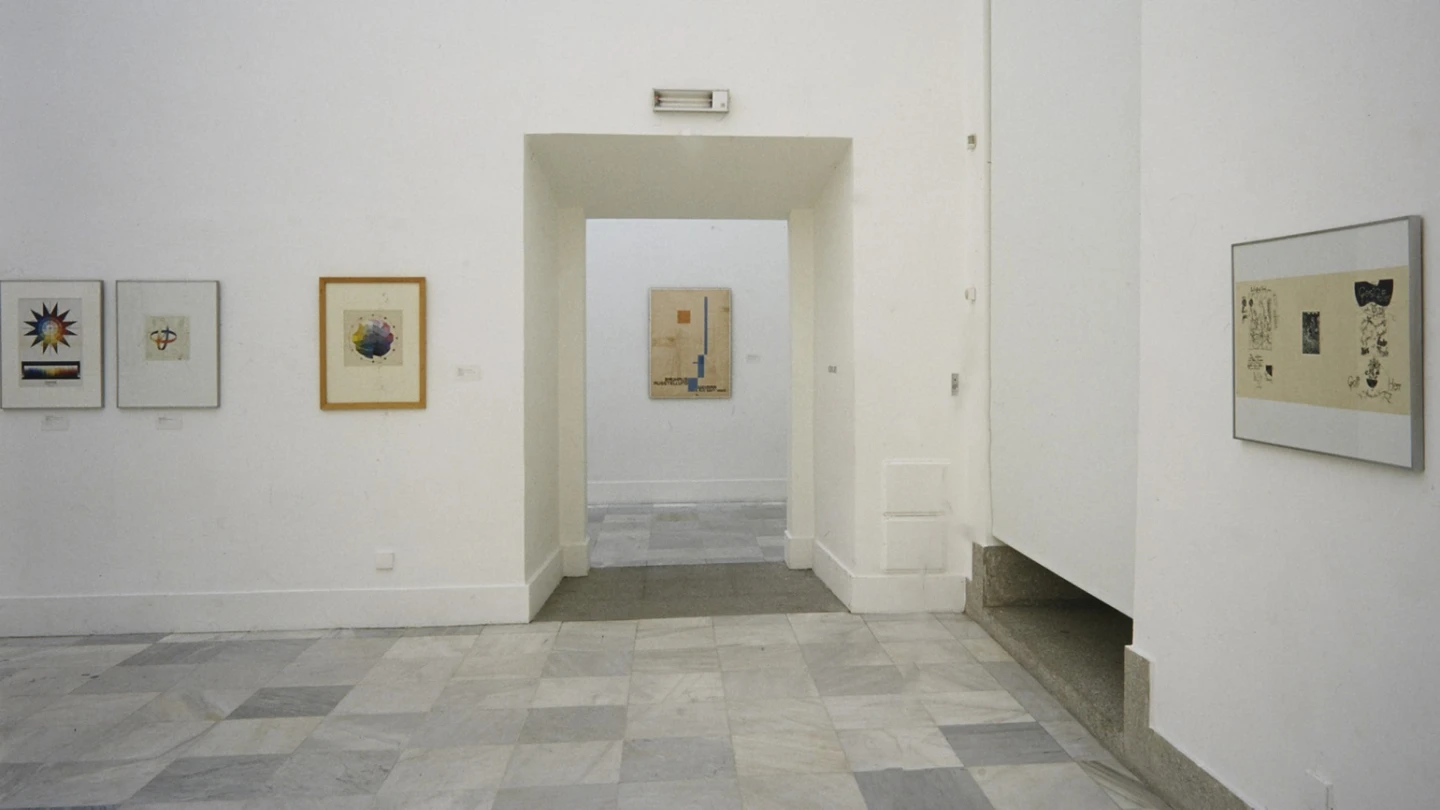Bauhaus Utopias. Work on Paper

From the very beginning the teaching staff is made up of names such as Lyonel Feininger, Gerhard Marcks and Johannes Itten, who are later joined by Georg Muche, Oskar Schlemmer and Paul Klee. Diverse activities take place in the different workshops and studios in the school, with masters and apprentices - as the Bauhaus itself called them - participating in conferences, exhibitions, theatre productions, etc. The characters of the teachers means that the Bauhaus' development is not homogenous; the incorporation of Wassily Kandinsky and the controversial “De Stijl” mark the beginning of the first crisis and change of direction in 1923 with the withdrawal of Itten, Lothar Schreyer and the appointment of Laszlo Moholy-Nagy and Josef Albers.
The Bauhaus dissolves in December 1925 and continues in Dessau, a period marked by greater international exposure and the shaping of a more deeply-rooted functionalist theoretical discourse. It is run by Walter Gropius, Hannes Meyer and, finally, Mies van der Rohe before its closure in 1932. The last phase, in Berlin, only lasts for one year following the arrest of some of its pupils and its dissolution by Mies van der Rohe, who refuses to accept the Gestapo's imposed conditions.
The exhibition entitled Utopías de la Bauhaus. Obra sobre papel (Bauhaus Utopias. Work on Paper) aims to reflect the vision of the group of artists as they firmly believe in the synthesis between teaching artistic activity and social reform.
The five phases of Bauhaus are represented in the exhibition: the handcrafted expressive and individualist phase (1919-1922); the first phase of constructivist production with a focus on formalism (1922-1924); the introduction phase, focussing on the functional and the industrial finish, with support from advertising (1924-1927); the fourth phase geared towards analysis and materialism and guided by production (1928-1930) and finally, the emphasis on the quality of material and production within the school of architecture (1930-1933).
Among the two hundred and fifty works exhibited, Paul Klee's twenty-five water colours stand out, taking up two of the exhibition halls, as do the drawings and watercolours by Oskar Schlemmer and Laszlo Moholy-Nagy's collages and watercolours. There are also a large number of documents used by the teachers in their classrooms as well as the students' pieces; for instance, works are displayed from the courses taught by the artists Johannes Itten, Moholy-Nagy, Joseph Albers, Paul Klee, Oskar Schlemmer and Wassily Kandinsky, who focuses his teachings on seminars and a class on colour. Finally, there are samples from workshops on typography, plastic arts, metal, murals, furniture, fabrics, ceramics and photography.
The disciplines of painting, architecture and theatre in Bauhaus are designated a unique space in the exhibition in order to perceive the coming together of artists in the school.
Artists
Magyar Nemzeti Galéria, Budapest (March 9 - April 20, 1988); Kölnischer Kunstverein, Cologne (July 15 - September 4, 1988)
Organised by
Centro de Arte Reina Sofía and Instituto Alemán de Madrid
Image gallery
